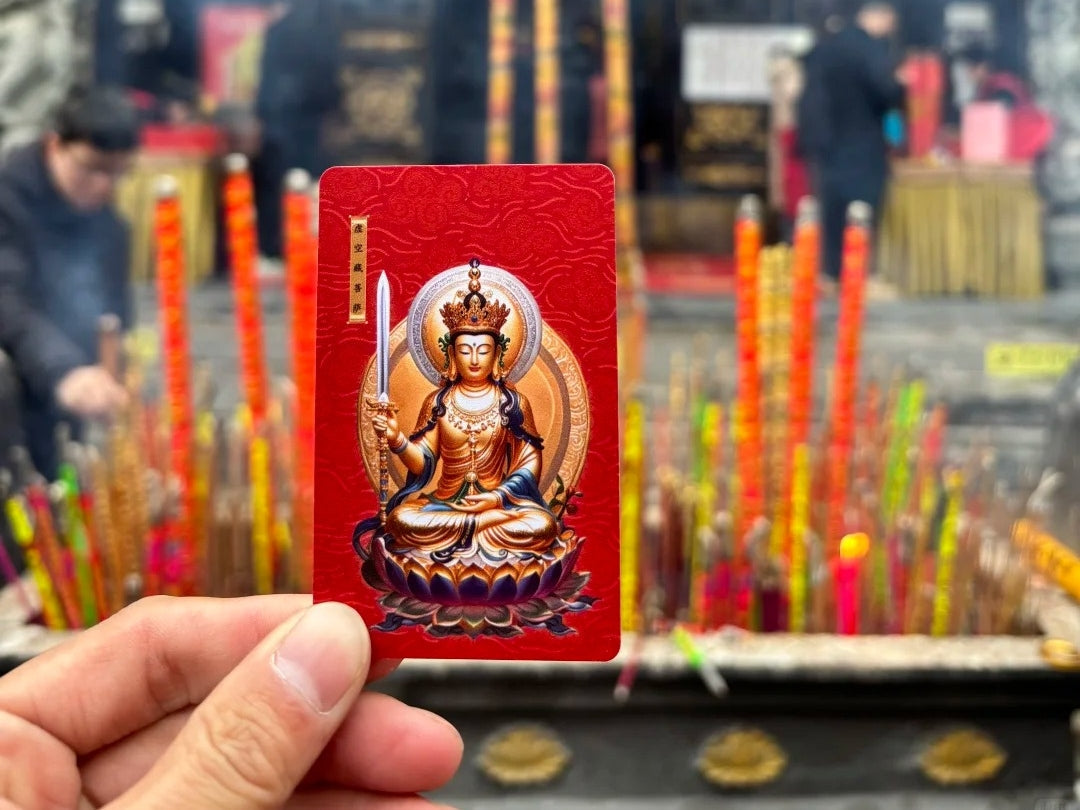Connecting with a guardian Buddha is less about perfect ritual and more about steady intention. Whether your focus is healing, clarity, protection, or compassion, a few short, regular practices can build a felt relationship with a guardian figure and bring calm and clarity into your day. Below are low-barrier morning and evening routines, respectful etiquette for wearing guardian-image jewelry, and safe ways to learn more from qualified teachers.

Why a small daily ritual matters
A daily Buddha ritual doesn’t have to be long. Short, repeated practices focus the mind, turn intention into habit, and remind you to act with the qualities your guardian embodies—compassion, courage, clarity, or healing. Think of ritual as training wheels for presence: small supports that help you return to your center throughout the day.
Keywords naturally used here: guardian buddha practice, daily Buddha ritual, guardian deity routine.

Gentle morning practice (3–5 minutes)
Start your day by inviting the guardian’s quality into action.
-
Prepare a small spot. Place an image, pendant, or tiny Thangka on a clean cloth or inside a gawu shrine box if you have one. A single glass of water and a light source (tea light or electric lamp) is all you need.
-
Set a simple intention. Softly name what you hope for today: “May I act with wisdom,” “May I be of service,” or “May healing guide my choices.”
-
Three mindful breaths. Breathe slowly and feel the body settle.
-
Brief mantra or phrase (30–60 seconds). Repeat a short mantra aloud or silently—e.g., Om Mani Padme Hum (Avalokiteshvara), Tayata Om Bekanze Bekanze Maha Bekanze Radza Samudgate Soha (Medicine Buddha), Om Tare Tuttare Ture Soha (Green Tara), or Om A Ra Pa Ca Na Dhih (Manjushri). If you prefer, use a short aspiration instead of a mantra.
-
Dedication. End with a brief dedication: “May this practice benefit all beings.”
If space or time is tight, touch your pendant at the start of the day and repeat the intention silently—this alone functions as a micro-practice.
Simple evening practice (5–10 minutes)
An evening ritual helps you reflect and release.
-
Clean and quiet the space. Wipe the altar cloth or clear a shelf. Freshness is a sign of care.
-
Review the day. Mentally scan for moments you acted with or without your intended quality. Acknowledge both without judgment.
-
Short recitation or mala round (108 not required). One to three minutes of mantra on a short mala, or a single slow breath per bead for a 27-bead wrist mala, is enough.
-
Offer a moment of gratitude. Offer the water bowl or light a candle for a minute, dedicating merit: “May any positivity from today support the well-being of all.”
-
Close respectfully. If your image was inside a gawu, close it; if you left a light, extinguish it with care.
Two-minute practices for busy days
-
Touch practice: Touch your pendant, take three slow breaths, and name your intention.
-
Walking mantra: While walking to the bus or through a hallway, silently repeat one line of mantra for five breaths.
These micro-practices sustain your guardian deity routine when time is limited.
Mantras for common guardian Buddhas (short list)
-
Avalokiteshvara (compassion): Om Mani Padme Hum
-
Medicine Buddha (healing): Tayata Om Bekanze Bekanze Maha Bekanze Radza Samudgate Soha
-
Green Tara (swift aid): Om Tare Tuttare Ture Soha
-
Manjushri (wisdom): Om A Ra Pa Ca Na Dhih
-
Yellow Jambhala (prosperity support): often paired with specific Jambhala verses—use with ethical intent
Use a single mantra consistently for a few weeks to notice its effect; switch only if another practice feels more supportive.

Wearing guardian-image jewelry: etiquette and practical tips
Jewelry with sacred imagery can be a powerful reminder, but treat it with respect.
-
Wear with intention. Before putting on a pendant, set a brief intention. That small act transforms fashion into devotion.
-
Avoid inappropriate contexts. Don’t wear sacred images casually where they might be disrespected—bathhouses, bars, or places that feel irreverent.
-
Care for the object. Keep Thangka pendants and metal amulets clean but avoid harsh chemicals. Store fragile images in a gawu when not worn.
-
Don’t commodify the sacred. If a piece was blessed or consecrated, wear it mindfully; if you buy a sacred image, it’s appropriate to learn or ask whether a consecration was done and, if desired, to have it blessed by a teacher.
Learning respectfully: where to turn for guidance
If you want to deepen beyond daily rituals, seek out qualified, ethical teachers.
-
Local centers and monasteries: Many have introductory classes on basic practices and mantras.
-
Books by reputable teachers: Choose works by recognized scholars or lineage holders for accurate, respectful context.
-
Retreats and workshops: Short retreats offer structured guidance; check teacher credentials and lineage.
-
Ask before adopting advanced practices: Some deity practices require empowerments or guidance from a lama—respect those boundaries.
A final word on intention over perfection
A meaningful guardian buddha practice isn’t measured by length or complexity; it’s measured by steadiness and heart. Regular, modest rituals—done with care and humility—create a living thread between your daily life and the qualities you seek to cultivate. Start small, be consistent, treat your sacred objects with respect, and let the relationship grow naturally.





